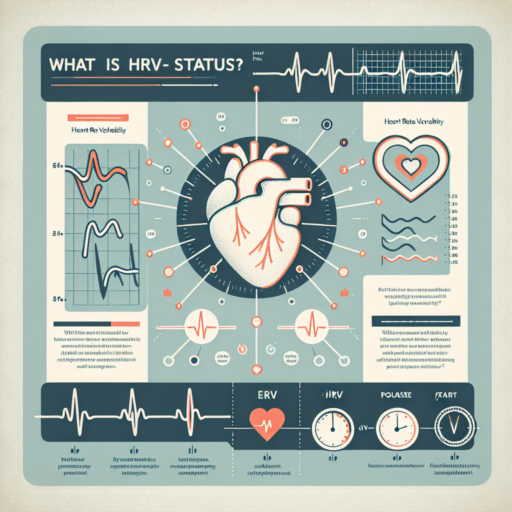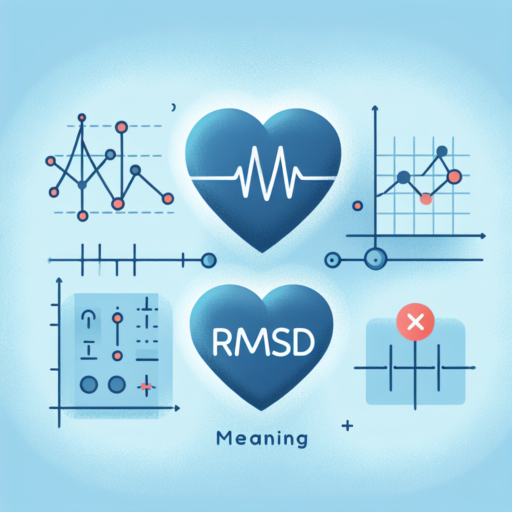What is a good HRV status?
Understanding what constitutes a good HRV (Heart Rate Variability) status is crucial for anyone looking to optimize their well-being through biofeedback and monitoring of their physiological stress and recovery levels. HRV measures the variation in time between each heartbeat, a marker of your autonomic nervous system’s flexibility and resilience. A higher HRV indicates better cardiovascular fitness, stress resilience, and overall health.
A good HRV score, however, is not a one-size-fits-all figure. It varies significantly among individuals, influenced by factors such as age, gender, fitness level, and lifestyle choices. Generally, an HRV score above the median for your age and gender group is considered good. For most adults, an HRV between 20-100 milliseconds is regarded as a healthy range, indicating a well-balanced autonomic nervous system.
Enhancing your HRV status involves lifestyle adjustments and habits that promote relaxation, stress management, and cardiovascular health. Practices such as regular exercise, mindful meditation, adequate sleep, and a balanced diet have been proven to improve HRV over time. Monitoring your HRV regularly using wearable technology can provide valuable insights into how your lifestyle choices affect your autonomic nervous system and guide you towards healthier habits.
What should my HRV be for my age?
Understanding your Heart Rate Variability (HRV) in relation to your age is essential in assessing your autonomic nervous system’s functionality and overall well-being. HRV measures the variation in time intervals between heartbeats, and its values can provide insights into your body’s stress and recovery states. As we age, these values tend to change, reflecting alterations in our health and fitness levels.
Generally, a higher HRV indicates a healthy heart and a robust autonomic nervous system, whereas a lower HRV may point to stress, fatigue, or underlying health issues. It’s important to note that HRV is individualized; what is considered a healthy range for one person may differ for another, even within the same age group. However, studies have shown that HRV tends to decrease as we age, signaling the importance of lifestyle choices in maintaining heart health and stress resilience.
To grasp what your HRV should be for your age, it’s beneficial to look at normative data charts that categorize average HRV values by age groups. For instance, younger individuals usually have a higher HRV compared to older adults, indicating greater variability and, often, better cardiovascular fitness and stress response mechanisms. Remember, these figures are averages and starting points for comparison; personal health status, fitness level, and lifestyle factors like diet, sleep quality, and stress management play significant roles in determining your HRV.
Should I worry if my HRV is low?
Understanding your Heart Rate Variability (HRV) can be a crucial aspect of monitoring your overall health and fitness levels. A low HRV can be a cause for concern for some, indicating less variability between heartbeats, which in some cases, might be related to higher stress levels, poor cardiovascular health, or reduced physical fitness. However, the significance of a low HRV can vary greatly among individuals, depending on various factors such as age, genetics, and lifestyle.
Factors Impacting HRV
- Physical Fitness: Regular physical activity can improve your HRV, while a sedentary lifestyle may lead to a lower HRV.
- Stress and Recovery: High stress levels and inadequate recovery can negatively affect your HRV.
- Health Conditions: Certain health conditions, including cardiovascular disease, can result in a lower HRV.
It’s important to consider these factors when evaluating your HRV readings. A single measurement of low HRV shouldn’t be a cause for immediate alarm, but consistent low readings might warrant a deeper investigation into your overall health and lifestyle habits. Consulting with a healthcare professional can provide a more comprehensive understanding of your HRV and what it means for your health.
No se han encontrado productos.
What level should HRV be?
Understanding the optimal level for Heart Rate Variability (HRV) is crucial for assessing physical and emotional wellness. HRV measures the time variation between heartbeats and is a trusted indicator of autonomic nervous system functionality. Optimal HRV levels can vary significantly among individuals, influenced by factors such as age, fitness level, and general health.
General HRV Guidelines
The average HRV score for adults can range widely, from below 20 milliseconds (ms) to over 200 ms, making it essential to consider personal baselines rather than universal benchmarks. Typically, a higher HRV indicates better cardiovascular fitness, stress resilience, and overall health. It’s vital, however, to monitor personal trends over time rather than focusing solely on singular readings.
Factors Affecting HRV
- Age: HRV typically decreases as people age, reflecting changes in the autonomic nervous system.
- Physical Fitness: Active individuals often have a higher HRV compared to those with a sedentary lifestyle.
- Stress Levels: Chronic stress can significantly lower HRV, indicating strain on the body’s physiological systems.
Regular monitoring and understanding individual HRV levels are imperative for optimizing health and wellness strategies. Awareness of how lifestyle choices and stressors impact HRV can guide personalized adjustments towards achieving or maintaining an ideal HRV range. This emphasizes the importance of a holistic approach to health, incorporating both physical and mental wellness practices.




